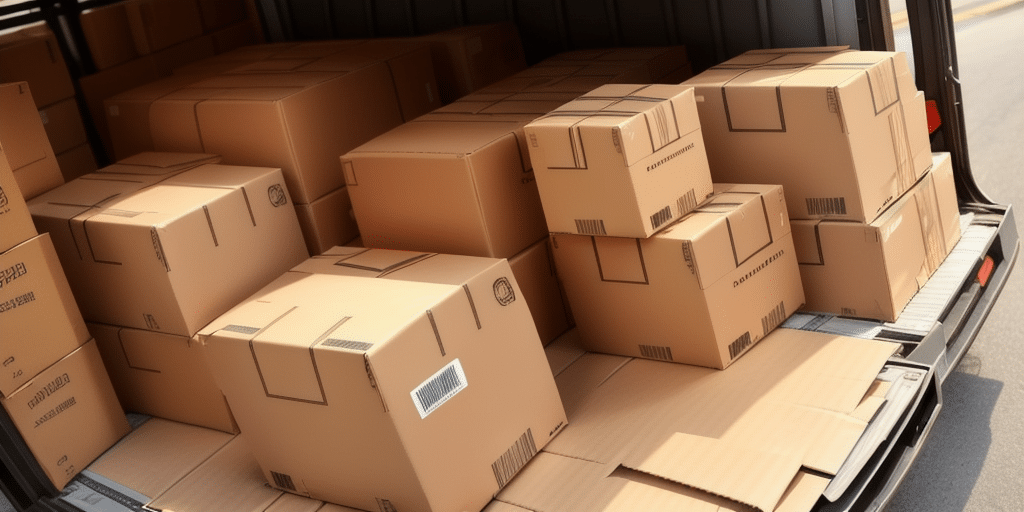What Does It Mean for a Package to Be in Transit?
If you've ever ordered a package online, you're probably familiar with the term "in transit." But what does it actually mean when a package is in transit? In this article, we'll take a deep dive into package transit, covering everything from the basics to common issues and tips for ensuring a smooth delivery experience.
Understanding the Basics of Package Transit
When a package is in transit, it means that it is on its way from the sender to the recipient. This journey can involve multiple modes of transportation, including trucks, planes, trains, and ships, depending on the origin and destination of the package. Throughout this process, the package is typically tracked through various stages until it reaches its final destination.
The duration of transit time can vary significantly based on factors such as the distance the package needs to travel, the transportation methods used, and any potential delays or issues that may arise during the journey. Additionally, many shipping companies offer expedited transit options for an additional fee, ensuring faster delivery for those who need it.
The Different Stages of Package Transit
Package transit can be divided into several key stages, each with distinct processes and checkpoints:
- Pickup: The package is collected by the carrier from the sender's location.
- Processing: The package is sorted and assigned a tracking number at the carrier’s facility.
- Transportation: The package is moved between different locations using various transportation methods such as trucks, planes, or ships.
- Delivery: The package is delivered to the recipient’s address.
Despite careful planning, package transit can encounter delays or issues at any stage, potentially causing frustration for both senders and recipients. Common problems include lost or damaged packages, delayed deliveries, and logistical errors.
To mitigate these issues, carriers implement advanced tracking and monitoring systems, allowing both the sender and recipient to monitor the package’s progress in real-time and receive updates about any delays or potential problems.
How Long Does Package Transit Take?
The time a package spends in transit varies widely based on several factors:
- Shipping Distance: Domestic shipments typically take less time than international ones due to shorter distances and fewer logistical steps.
- Shipping Method: Expedited shipping options can reduce transit times but often at a higher cost.
- Carrier Efficiency: Different carriers have varying levels of efficiency and reach.
- External Factors: Weather conditions, natural disasters, and other unforeseen circumstances can cause delays.
For example, according to the U.S. Postal Service, standard First-Class Mail typically takes 1-3 business days within the United States, whereas international packages may take up to 2 weeks or more depending on the destination.
It's important to remember that estimated delivery dates provided by shipping carriers are just that—estimates. Actual transit times may vary, so it's advisable to track your package and maintain communication with the carrier if you have concerns about its delivery.
Factors That Affect Package Transit Time
Several key factors influence how long a package remains in transit:
- Distance: Longer distances generally result in longer transit times.
- Shipping Method: Express versus standard shipping options affect delivery speed.
- Carrier Processing Times: The efficiency of the carrier’s processing facilities impacts transit duration.
- Weather Conditions: Extreme weather can delay transportation and delivery.
- Package Type: Fragile or hazardous items may require special handling, increasing transit time.
- Customs Clearance: International packages must clear customs, which can introduce delays if documentation is incomplete or inspections are required.
It's also worth noting that peak seasons, such as the holiday period, can lead to longer transit times due to the higher volume of shipments.
Tracking Your Package in Transit
One of the significant advantages of package transit is the ability to track your package's journey in real-time. Most carriers provide online tracking tools that allow senders and recipients to:
- Monitor the package's current location.
- View its progress through various transit stages.
- Receive notifications about delays or delivery updates.
Effective tracking enhances transparency and provides peace of mind, especially in situations where delays or issues arise. However, it's important to be aware that tracking information may not be available immediately after shipping, and some carriers may have limitations on tracking for certain types of packages or destinations. Always verify the tracking options available with your chosen carrier.
Common Issues with Package Transit and How to Solve Them
While the package transit process is generally smooth, several common issues can occur:
- Lost Packages: Misrouted or lost packages can be recovered through carrier claims and tracking systems. Contacting the carrier promptly is essential.
- Damaged Packages: Proper packaging is crucial to prevent damage. If a package arrives damaged, document the damage and notify the carrier immediately to file a claim.
- Delayed Deliveries: Delays can result from various factors such as high shipping volumes or weather disruptions. Staying informed via tracking updates can help manage expectations.
- Incorrect Delivery Address: Double-check addresses before shipping to avoid delivery to the wrong location.
- Package Theft: To mitigate theft risks, consider options like requiring a signature upon delivery or utilizing secure delivery locations such as PO boxes or package lockers.
By addressing these issues proactively and maintaining clear communication with the carrier, many transit problems can be resolved efficiently.
Tips for Ensuring a Smooth Package Transit Experience
To enhance the likelihood of a seamless package transit, consider the following tips:
- Accurate Shipping Information: Ensure that all shipping details, including the recipient’s address and contact information, are correct and complete.
- Proper Packaging: Use appropriate packaging materials to protect the contents, especially for fragile or valuable items.
- Choose the Right Shipping Method: Select a shipping option that aligns with your delivery timeline and budget—expedited shipping can reduce transit times when necessary.
- Track Your Package: Regularly monitor your package’s status through the carrier’s tracking system to stay informed about its progress.
- Insure Valuable Items: Purchasing shipping insurance can provide financial protection against loss or damage during transit.
- Utilize Carrier Services: Take advantage of additional carrier services such as delivery notifications or signature requirements to enhance security and tracking.
What to Do If Your Package Is Stuck in Transit
If your package is delayed or appears stuck in transit, you can take several steps to address the issue:
- Check Tracking Information: Review the latest tracking updates for any indications of delays or issues.
- Contact the Carrier: Reach out directly to the carrier’s customer service for detailed information and potential resolution options.
- Reach Out to the Sender: The sender may assist in contacting the carrier or initiating a search for the package.
- File a Claim: If the package is lost or significantly delayed, you may need to file a claim with the carrier for compensation.
Patience is essential, especially if delays are due to circumstances beyond the carrier’s control, such as extreme weather or logistical disruptions. However, proactive communication can help expedite the resolution process.
Comparison of Different Shipping Carriers’ Package Transit Times and Services
Choosing the right shipping carrier involves comparing various aspects, including transit times, services, costs, and customer support. Here’s what to consider:
- Transit Times: Evaluate how quickly different carriers can deliver packages based on their standard and expedited services.
- Shipping Costs: Compare pricing structures to find a carrier that fits your budget while meeting your delivery needs.
- Customer Service: Research carriers’ reputations for customer support, including availability of assistance and responsiveness to issues.
- Package Safety and Security: Consider carriers with strong records in minimizing lost or damaged packages and providing secure handling.
- Additional Services: Look for value-added services such as tracking, insurance options, and delivery flexibility.
For example, major carriers like FedEx, UPS, and the United States Postal Service offer varied services and transit times that can cater to different shipping needs. Assessing your specific requirements and comparing carriers accordingly can help you make an informed decision.
International Package Transit: What You Need to Know
Shipping packages internationally introduces additional layers of complexity, including:
- Customs Regulations: Each country has its own import regulations, duties, and taxes that must be navigated.
- Documentation Requirements: Proper documentation, such as commercial invoices and shipping labels, is essential for smooth customs clearance.
- Language Barriers: Communication challenges can arise when dealing with international carriers and customs officials.
- Extended Transit Times: International shipments generally take longer due to longer distances and additional processing steps.
- Tracking Limitations: Tracking may be less detailed or slower to update on international shipments.
To ensure a successful international shipping experience:
- Research and comply with the destination country’s import requirements.
- Use a reputable carrier experienced in international logistics.
- Accurately complete all necessary documentation.
- Consider purchasing shipping insurance for valuable or fragile items.
Proper planning and understanding of international shipping processes can help mitigate delays and ensure your package arrives safely.
The Impact of Weather on Package Transit Time and Delivery
Weather conditions can significantly influence package transit, especially in regions susceptible to extreme events like hurricanes, snowstorms, or floods. Such conditions can lead to:
- Transportation Delays: Flights may be canceled or rerouted, and road closures can halt ground transportation.
- Infrastructure Damage: Severe weather can damage transportation infrastructure, slowing down the delivery process.
- Increased Package Handling Needs: Packages may require special handling to protect them from weather-related damage.
To minimize the impact of weather on package transit:
- Stay informed about weather forecasts and potential disruptions in your area.
- Communicate with your carrier to adjust delivery schedules if necessary.
- Choose appropriate shipping options that account for potential weather delays.
- Ensure proper packaging to protect against moisture, temperature extremes, or other weather-related hazards.
By anticipating weather-related challenges and taking proactive measures, you can help ensure that your packages are delivered reliably, even in adverse conditions.
In conclusion, package transit is a multifaceted process involving various stages and factors. Being informed about the transit process, understanding potential issues, tracking your package, and implementing best practices can collectively contribute to a smooth and successful delivery experience.






















